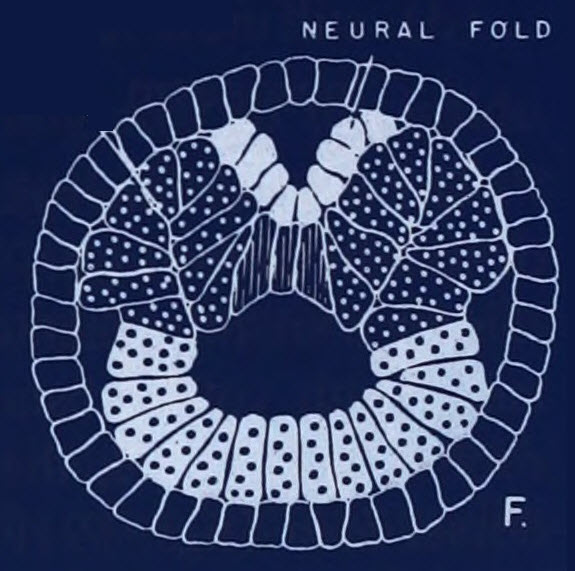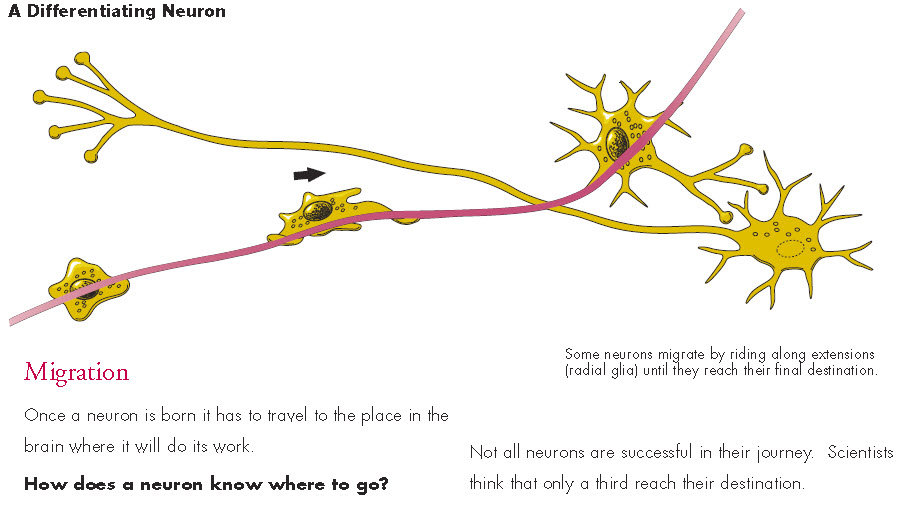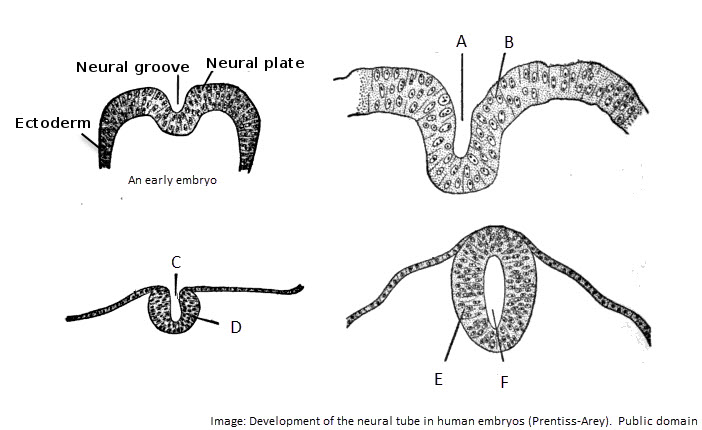Nervous system formation
 This activity gives an insight into the complexity of the differentiation and specialisation of cells during the growth of an embryo in this activity. A wonderful short video clip shows neurones in an embryo forming a neural tube and students make notes using a structured worksheet. A research task follows leading students to an understanding of the migration of neurones. The activity concludes with a short video and some questions about spina bifida allowing students to use their new knowledge of neurulation.
This activity gives an insight into the complexity of the differentiation and specialisation of cells during the growth of an embryo in this activity. A wonderful short video clip shows neurones in an embryo forming a neural tube and students make notes using a structured worksheet. A research task follows leading students to an understanding of the migration of neurones. The activity concludes with a short video and some questions about spina bifida allowing students to use their new knowledge of neurulation.
Lesson Description
Guiding Questions
- How does the nervous system form in a developing embryo?
- Which cells are the first to become nerve cells?
- How do the cells organise themselves to form a complex nervous system?
Activity 1 - Development of a neural tube
Watch the short video showing neurulation, the development of a neural tube in a simple vertebrate, Xenopus (xenos=strange, pous=foot) a Genus of clawed frogs
Complete the ![]() Neural tube formation worksheet below after watching the video.
Neural tube formation worksheet below after watching the video.
Answer the drag and drop questions below before moving on to activity 2. This could be a class activity on the board.
The diagrams below represent parts of the development of the neural tube in human embryos.
Drag the correct labels for each of the letters to the spaces on the right of the following diagrams.
Neural grooveNeural plate Neural tubeNeural cavityEctoderm
 |
A. B. C. D. E. F. |
The neural plate gradually forms a tube, with a neural cavity inside. Until the tube is formed the enlarged cells of the ectoderm are called the neural plate, and the space in between is the neural groove. The groove graually spreads along the whole length of the animal and then forms a tube.
Activity 2 - Migration of neurones
Watch the following video showing the ![]() Migration of a single neurone
Migration of a single neurone
This video shows the migration of a single neurone migrating along a thin fibre. It is proof that they can move from one place to another.
Skim read the following article, ![]() Brain basics booklet and find the answers to the questions below.
Brain basics booklet and find the answers to the questions below.
NINDS-prepared information is in the public domain and may be freely copied.
Research questions using the  Brain basics booklet
Brain basics booklet
1. What is controversial about the 'birth' of neurons in the brain?
................................................................................................
................................................................................................
2. When considering stem cells what is the difference between "self renewal" and "differentiation"?
................................................................................................
................................................................................................
3. An immature neuron begins it's process of differentiation by migrating to the place where it will do its work. What happens to a neurone which migrates to the wrong place?
................................................................................................
................................................................................................
4. Cells which migrate to the right place begin to form neural circuits. What do you understand by this term, "neural circuits"?
................................................................................................
................................................................................................
Click the eye icon to display some suggested answers to these questions
1. What is controversial about the 'birth' of neurons in the brain?
The majority of neurons are already present in our brains by the time we are born, which suggests that the birth of neurones only happens during the development of an embryo.
However there is evidence to support that neurogenesis (the birth of neurons) is a lifelong process
2. When considering stem cells what is the difference between "self renewal" and "differentiation"?
When a stem cell divides to produce another stem cell, it is said to self-renew. This new cell has the potential to make more stem cells.
When a stem cell divides to produce an early progenitor cell, it is said to differentiate. Differentiation means that the new cell is more specialized in form and function.
3. An immature neuron begins it's process of differentiation by migrating to the place where it will do its work. What happens to a neurone which migrates to the wrong place?
Scientists think that only a third reach their destination. The rest either never differentiate, or die and disappear at some point during the two to three week phase of migration.
4. Cells which migrate to the right place begin to form neural circuits. What do you understand by this term, "neural circuits"?
information pathways connecting neuron to neuron
its shape and location, the kind of transmitter it produces, and to which other neurons it will connect.
Activity 3 - Spina bifida
Watch the two short videos.
Meet Andrea Lausell who has spina bifida | Find out more about the biology |
Write down three questions after watching the videos about spina bifida
1. A question to ask a biology student to see if they understand.
2. A questions to ask a teacher because you still don't know everything.
3. A question to ask someone suffering with spina bifida like Andrea in the video above.
Teacher's notes
The first activity covers most of the information students need about neurulation. The video is a nice introduction and the worksheet allows students to complete some notes and check their understanding.
The simple drag and drop is a quick class activity to summarise the main points.
The following points are addressed in this activity
- Embryonic chordates form a neural tube by infolding of ectoderm followed by elongation of the tube.
- Differentiation of cells in the neural tube produces neurons.
- Immature neurons migrate to their final location.
- Each immature neuron grows an axon in response to chemical stimuli.
- Some axons extend out of the neural tube to reach other parts of the body.
In the 2016 IB SL exam there was a questions to label the 'notochord' in a diagram showing neurulation. Notochord hasn't been included in this activity, but it may be worth mentioning to students just in case.
Activity 2 covers the migration of neurones as part of their differentiation. The short video has no sound but nicely illustrates the migration of a neurone.
- Neurons are initially produced by differentiation in the neural tube.
- Immature neurons migrate to a final location.
- Some axons extend out of the neural tube to reach other parts of the body jelly
possible extra ....
- Multiple synapses are formed by developing neurons.
Activity 3 is an extension of the material on neural tube formation - applying it to the illness, spina bifida.
This link gives the same information as the NINDS booklet in website form. http://www.ninds.nih.gov/disorders/brain_basics/ninds_neuron.htm
****
The following information concerns an experiment done by a class of students in Japan to watch the development of chick embryos by incubating them in plastic film.The video has been circulating in social media for a number of months. The experiment does not meet the IB animal experimentation guidelines, however, information about the experiment is given here because some students might have seen this video and it is a fascinating insight into embryology.
In video of the 21-day experiment posted to YouTube earlier this month, the biology students from Oihama High School in Chiba can be seen breaking open fertilized brown eggs they got from the grocery store onto plastic wrap stretched over a cup.
According to a scientific paper published in the Japan Poultry Science Association about the experiment, the chickens were bred to maturation and they produced healthy offspring.
In a chapter in a US biology textbook from 1993, Dr Cynthia Fisher explained how to use the technique among groups of students. I don't advise doing this experiment with IB students as it is not in the spirit of the IB animal experimentation guidelines

 IB Docs (2) Team
IB Docs (2) Team
